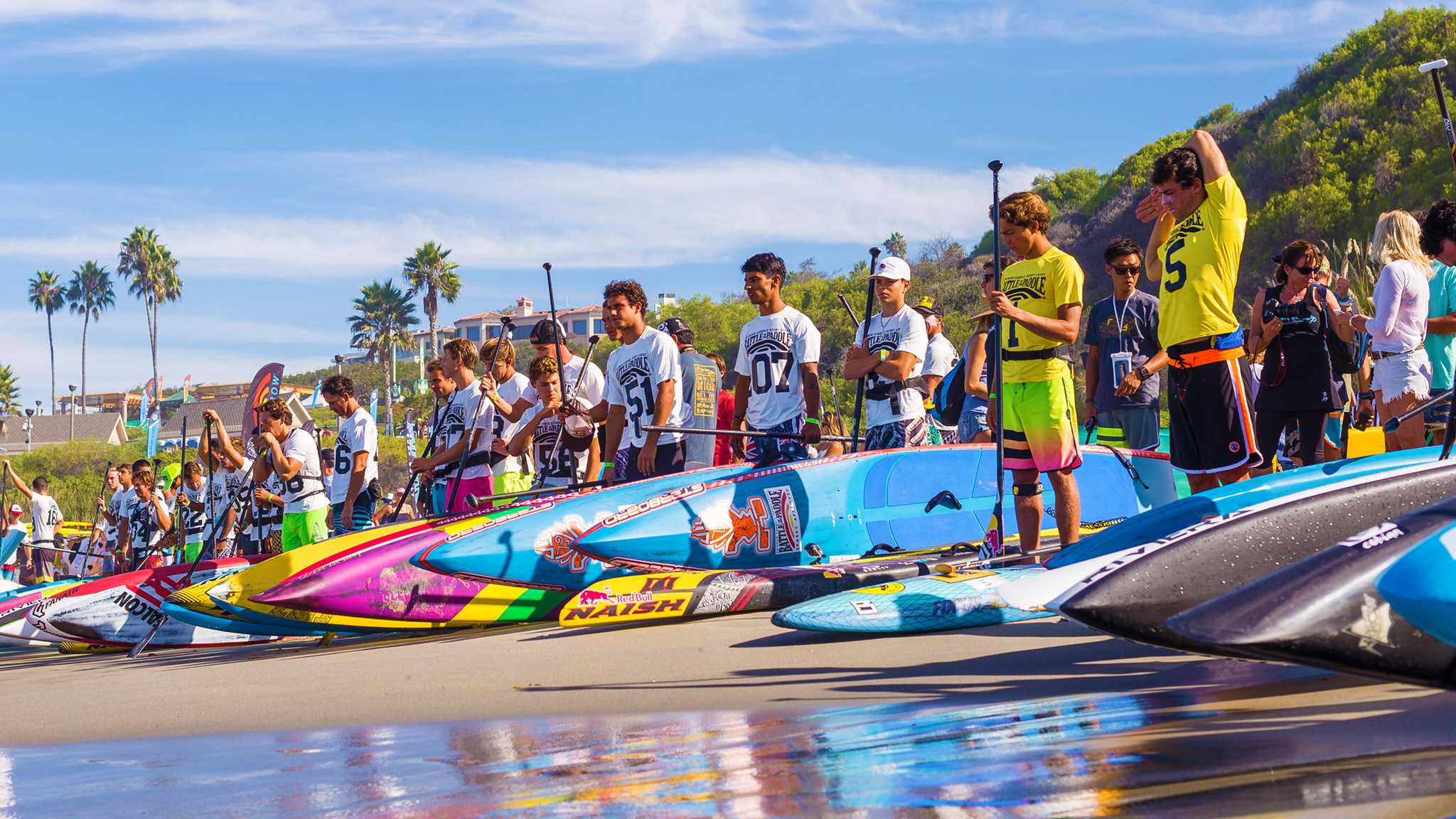
The Top 14 Most Competitive Races Of 2014
There were a lot of SUP races this year. We had over 400 listings on the Rogue Race Calendar. We sent 137 race results to the Results by Riviera archive. You couldn’t go a week without your Facebook feed being flooded with photos of SUP races here, there and everywhere.
Some of those races were fun, local events. Some were grand, international spectacles. Most fell somewhere in between. And that’s just fine. Most races don’t need to be grand to be successful, they just need to be well organised, encourage a few extra people to give the sport a try and offer everyone a fun day on the water.
But some races push the boundaries a little more than the average. Some races attract, either through deliberate marketing or incidental brilliance, a disproportionately large amount of attention and elite talent. Quite simply: Some races are a lot more competitive than others.
However one thing that’s always kinda bugged me about SUP racing is how to rank events based on their level of competition. How do you compare the major races around the world to see which was the most elite, which was the most competitive, which was the hardest race to win?
This isn’t pro surfing, where the same 34 guys/17 girls show up at every event throughout the year. Every SUP race has a different starting lineup. Like the stripes of a zebra, no two races are ever the same. And that makes things very hard to compare.
And while “level of competition” is just one single measure – there are plenty of factors that determine a good race, and the events listed below aren’t necessarily the best – it’s certainly one of the more significant crieria, especially as our sport quickly grows larger and more professional. So I think it’s very worthwhile to find a fair and accurate way to compare and rank the world’s most elite SUP races. And also because I’m a total stats geek…
So, how do you rank the “Most Competitive Races Of The Year”?
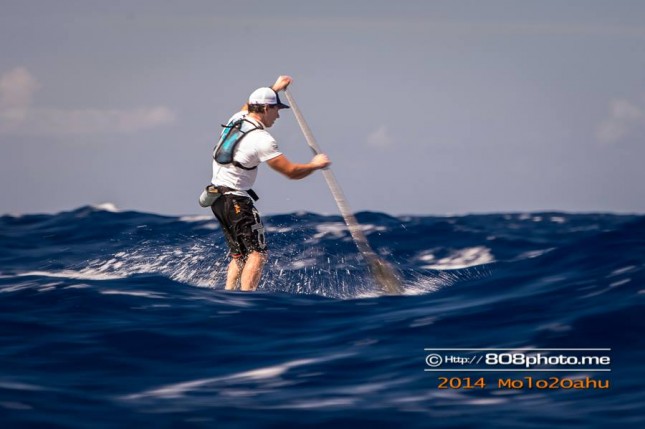
Molokai-2-Oahu (© 808photo.me)
Well if you follow this site closely then you’ll be very familiar with the SUP RACER WORLD RANKINGS. In a first for the sport of stand up paddling, I attempted to rank the world’s best paddlers using a complex, accurate and totally unbiased algorithm.
And one vital piece of this World Rankings system is the proprietary Race Index.
The Race Index gives every SUP race in the world a score from 0-100%, based on how many of the current Top 50 ranked paddlers show up to compete (the higher a paddler’s individual ranking, the greater weighting they contribute to an event’s overall Race Index score).
The more elite paddlers that a race attracts (i.e. the more competitive the field is), the higher it scores on the Race Index. So this percentage score is a direct measure of level of competition.
To count towards the SUP RACER WORLD RANKINGS, an event must reach a minimum Race Index score of 15%. This year we saw 27 men’s races and 16 women’s events reach that threshold and be included in the World Rankings.
Combined with the Base Points Table, the Race Index helps produce the final World Rankings leaderboard. The whole thing is a very complex mathematical system (it took almost two years to build and perfect) but it has a very simple output: The world’s Top 100 Men and the Top 50 Women.
And while it’s only one piece of the overall World Rankings system, this Race Index is actually very interesting to look at on its own, at least in my stats-geek opinion. That’s because our Race Index gives a very accurate, side-by-side ranking of the world’s most competitive events.
Finally we can see which events attracted the best lineup of talent. Which races were the most competitive. Which were the hardest to win.
So using this Race Index, I’ve compiled the Top 14 Most Competitive Races Of 2014 (with a separate list for men and women).
>> SKIP my lengthy analysis/critique and jump straight to the Top 14 list
So which races attracted the pros in 2014? In the least surprising development of the year, I can announce that the Battle of the Paddle Elite Race took out the #1 spot. This is hardly newsworthy. Anyone could have guessed the BOP would be #1. Everybody knows the BOP is the Super Bowl of SUP. It’s the one race of the year that attracts virtually all of the top guys and girls.
But what is slightly surprising is just how far ahead of the field the Battle of the Paddle sits. The biggest race of the year finished with a near-perfect score of 92%, after virtually all of the world’s best paddlers competed at Salt Creek. That’s WAY ahead of the other big events. In fact the BOP was almost twice as competitive as the second-most-elite race on the list (which scored 53.5%).
In a sign of how fragmented and disorganised the elite side of our sport is, outside of the BOP Elite Race only 2x men’s races and 1x women’s race managed to creep above the 50% threshold.
The gulf between the Battle and everything else highlights one very specific point: That the Battle of the Paddle is the ONLY race in the world that attracts a big chunk of the world’s best paddlers. Carolina, the Showdown and the Gorge all did very well this year, but they were still a mile behind Dana Point.
Again, I’m not saying “level of competition” is a signal of how good or bad an event is. We all know the BOP isn’t exactly the smoothest or most drama-free race in the world. But I do believe this is an important way to rank the stand up paddling race scene.
I actually think the Battle’s dominance is a bad sign for the sport. It’s not healthy. I believe we need more than one single event each year where all the best paddlers are competing. Next year I’d love to see half a dozen races hit the 80% threshold. I don’t think we’ll get that many, but I do have a feeling the BOP’s reign as the only big race of the year is coming to an end.
I’m also not sure we’ll ever see a race score higher than 92%, not even the BOP itself. This record may stand for a long time to come. The mythical 100 point race is a dream that all race fans would surely love to see, but the logistics of getting the entire Top 50 in one place at one time is near impossible. Salt Creek seemed to be a near-perfect storm, one that may never be seen again.
So yeah, the Battle of the Paddle was the #1 most competitive race of the year. No surprise. But it was #1 by a LONG way, which kinda is a surprise.
Though I should note: I’m only talking about the Elite Race here. It’s worth noting that the “other” big race at this year’s Battle of the Paddle, the Elite Distance Race, only scored 48%, which highlights that the Elite Race is far and away the showpiece event of BOP weekend.
Amazingly, despite it’s Elite Race sibling holding down the #1 spot by a massive margin, the Elite Distance Race slipped down to 4th place on the men’s list and right down to 7th place on the women’s. This shows just how many of the pros focus solely on the Elite Race skip day two.
In fact the entire Naish team bailed on the Elite Distance Race this year, after their bosses deemed it too expensive to ship 14′ boards to California just for one race (the BOP, in one of the great mysteries of our time, requires paddlers to bring two different boards for one weekend of racing – 12’6 for the Elite Race and 14 footers for the Distance).
There has actually been talk that BOP 2015 will scrap, or at least drastically alter the Distance Race. Not only does it receive a much lower level of competition, as our Top 14 highlights, the Distance Race also scores a tiny fraction of the crowd that the Elite Race captures. I for one am a fan of the Distance Race but the numbers don’t lie: It’s not exciting to watch and a big percentage of the world’s best paddlers don’t deem it to be necessary. With apologies to Danny Ching, this race is becoming a little pointless.
But enough with the BOP (which has topped every one of our Top 14 Of 2014 lists by the way), let’s look at the other big races of 2014.
One event that certainly generated some buzz this year was the Ultimate SUP Showdown, which attracted the second highest level of competition on the men’s side and third-highest for the women. With its promise of TV air time and top-level prize money, plenty of the world’s best made the trip to Waikiki in August.
I have no idea what the Showdown will do in 2015, if anything at all. And despite the strong level of competition it attracted this year, I was rather critical of the event’s format – it needs a lot of tweaking if it’s going to return. But still, hats off to the Showdown organisers for managing to rally the troops better than just about any other race in the world.
Moving on, two of the most competitive races of the year were also two of the best: The Carolina Cup and the Gorge Paddle Challenge. These are also two races that don’t bend over backwards to attract elite talent, they’ve simply done a great job over the years and garnered a reputation for producing a fun, worthwhile weekend of racing.
The Naish Columbia Gorge Paddle Challenge, which is actually two totally separate races – the flat water Course Race and the Downwinder (which this year became the “Double Downwinder”) – was very impressive in 2014, securing positions #3 and #5 on the men’s Top 14 and #2/#4 on the women’s.
Having talked to several of the top paddlers about their plans for 2015, I’m almost certain that the Gorge will score a significantly higher Race Index % next year. It sounds like this is going to be THE place to be in 2015. In fact I’d go as far as saying right now, even though we’re still eight months out from race day, that the Gorge will be the #2 race in the world next year, behind only the BOP Elite Race (and it probably won’t be that far behind either).
An interesting footnote about the Gorge: Despite the same paddlers being in the same location all weekend, the Course Race and Double Downwinder scored noticeably different Race Index scores on both the men’s and women’s Top 14 lists. In a further twist, the dominant race switched between the genders – more elite women entered the Double Downwinder than the Course Race, while inversely the men’s Course Race was more competitive than the Downwinder (which is largely due to Kai Lenny pulling a heart string and skipping day two).
Like the Gorge, another race that was very big this year and will probably be even bigger in 2015 is the Carolina Cup. Again, this is one of those terrific, grassroots style community races that attracts the pros not because of the money (Carolina has a relatively small prize purse), but because it’s a great, challenging race in a beautiful location with hundreds of stoked out weekend warriors competing alongside the pros.
The Carolina Cup is basically the East Coast version of the BOP, where amateurs, elites and all of the brands come together to create a festival-like atmosphere.
In fact it’s so big that Carolina was perhaps the single largest SUP race in the world this year, at least in terms of raw participation numbers. It was also one of the biggest in terms of level of competition, scoring 45% on the men’s side to finish 6th and 39% on the women’s to finish 5th.
I’m already looking forward to heading back to Wilmington, North Carolina to see what the 2015 Cup holds.
Looking further down the list we see another race in a similar mould to the Gorge/Carolina, and that is Germany’s Lost Mills event. Now approaching its 4th year, the Lost Mills has established itself as Europe’s premiere SUP race despite being held on a lake in the middle of nowhere in Bavaria.
This race has attracted an increasingly stellar lineup year after year, and in 2014 Bavaria played host to 10 of the world’s top 15 ranked men: Danny Ching, Connor Baxter, Jake Jensen, Georges Cronsteadt, Casper Steinfath, Beau O’Brian, Eric Terrien, Zane Schweitzer, Chase Kosterlitz and Titouan Puyo. That gave the Lost Mills’ main event, the Distance Race, a score of 39% and position #9 on the men’s Top 14. It also scored 21% and 10th spot on the women’s Top 14.
As a bonus, the Lost Mills counted twice in the rankings, with the Distance Race joining the special “Fastest Paddler On Earth” individual time trial race in counting towards the SUP RACER WORLD RANKINGS.
The Lost Mills has enjoyed some meteoric growth since debuting in 2011 and I hope it can sustain itself when it returns from June 4-6, 2015.
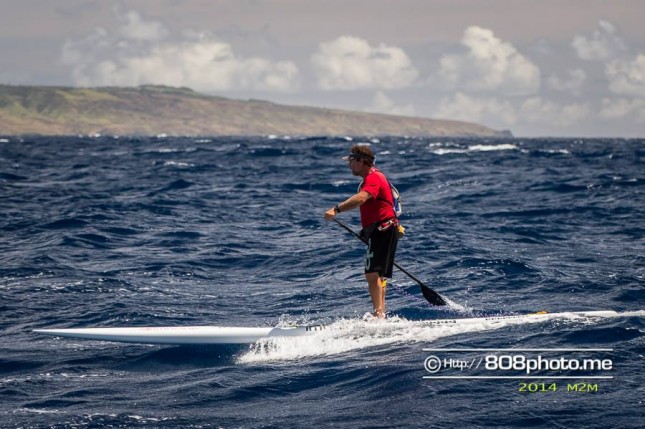
Maui-2-Molokai (© 808photo.me)
The Men’s and Women’s Top 14 Most Competitive Races Of 2014 have been calculated separately but are strangely similar. Almost identical. There is just one race missing from the other: The OluKai Ho’oluale’a is only present in the men’s Top 14 (taking position #13 with a Race Index score of 31%), while Maui-2-Molokai replaces it on the women’s Top 14 (finishing #12 with a score of 21%).
Looking at the remainder of the races on the Top 14 we can see three franchises that all carry the “World Championship” label. However despite their self-appointed levels of importance, I’d say all three of these were rather disappointing in 2014, at least where “level of competition” is concerned. Oddly enough, these three events label themselves as a “World Championship” but none of them attract even half as much elite talent as the BOP, which doesn’t bother giving itself any fancy titles. Funny that.
I am of course talking about the Stand Up World Series, the ISA World Stand Up Paddle and Paddleboard Championship and the Molokai-2-Oahu Paddleboard World Championships.
The fledgling Stand Up World Series performed a little poorly again this year, in contrast to its lofty ambitions and big promises made at the start of the season. This was the third full year of the World Series but the best the franchise could manage in 2014 was position #7 on both the men’s and women’s lists. In total the Series scraped just 4x of its events into the men’s Top 14. The tour performed even more poorly on the women’s side, with just 2x races inside the Top 14.
And this is despite our Race Index algorithm giving Stand Up World Series events an advantage: The formula rewards races that attract the higher-ranked paddlers but ignores the overall level of participation. Most World Series races have relatively small participation numbers (their showcase “Finals @ Turtle Bay” event had just 20 guys and 8 girls for example), which would make most other races totally insignificant. However when those handful of paddlers include the likes of Connor and Kai, the event’s Race Index score becomes somewhat inflated. This allows the World Series to stay within sight of the major events such as Carolina and the Gorge despite having just 5-10% of the levels of participation of those races.
The World Series’ problems are actually quite serious when you consider this is a for-profit corporate enterprise that’s selling itself as the “Official World Championship Tour for the Sport of Stand Up Paddling” and the crowner of the “Undisputed World Champion.” Right now there is an unfortunately large disconnect between the marketing hype and the reality of the situation.
And that’s a shame because this tour has done so many things better than any other event on the planet, such as convincing non-endemic sponsors to support the sport, producing excellent media and regular webcasts, getting TV air time, etc.
However for every good deed they do, the World Series organisers manage to cancel it out with an equal or greater-sized mistake or misdeed. It seems they keep dropping the ball on the critical points, with endless broken promises, event cancellations or date switching, prize money being changed at the last minute (or not being paid at all), falling out with 3rd party event organisers, etc.
The World Series has lost the trust of many elite paddlers (and brands, and race directors) because it constantly over-promises and under-delivers.
Despite my hopes (and my support – I’ve written 103x original articles about the World Series, 97% of which have been overwhelmingly positive), to me this whole charade has become a house of cards.
Still, it’s the only thing we have that comes close to an organised, all-inclusive world tour. The World Series is also run by the most incredibly resilient and determined man this sport has ever seen, so I doubt it’ll disappear any time soon.
The Stand Up World Series team is, like they do every year, promising big/dramatic/exciting things for the new year. So I guess we’ll just have to wait and see if they’ve finally gotten their house in order, or if season #4 will be as disconnected from reality as the first three.
Though one event that has an even bigger disconnect from reality is the ISA World Stand Up Paddle and Paddleboard Championship. Despite my continued support for this event (27x original news stories written this year alone), I can’t hide my disdain at how poorly the ISA has performed, at least when it comes to level-of-competition.
This event, which like the World Series markets itself as the “World Championship” for our sport, failed to make the men’s Top 14 list at all. The ISA Worlds did reach the minimum Race Index score of 15% to count towards the SUP RACER WORLD RANKINGS, but only just. After scoring a measly 22% in both the Course and Distance Races, the Worlds just scraped in at position #18 on the men’s Race Index.
On the women’s side the event’s fortunes were slightly brighter, taking home the #8 (Course Race) and #14 (Distance Race) positions to finish inside the Top 14 Of 2014.
However to call yourself a “World Championship” and not have either of your two races inside the men’s Top 14 is downright worrying. Not being able to attract a powerhouse nation such as Hawaii and missing top ranked paddlers from almost every other country is a big problem if you want to be taken seriously in this sport. If you want to be known as the “World Championship” then its a HUGE problem.
The “Worlds” has always been a bit of an anomaly – when it came along in 2012 there was a mix of bewilderment and resentment towards the International Surfing Association for trying to take on (or take over, as some people saw it) stand up paddle racing – but now the event risks completely fading into oblivion.
Like the World Series, the ISA World Champs has done a lot of good things that we should credit (first class webcasts, strong media, excellent event infrastructure, pushing for an Olympic berth, etc) but it still fails at the most critical points: Convincing the world’s best paddlers to get excited about the event.
Just like the World Series, I often feel the paddling community needs to drop its grudges and meet the organisers in the middle. But just like the World Series, I don’t think the organisers have gotten even a quarter of the way there yet…
Things have improved dramatically since the first edition of the Worlds back in 2012, while next year’s event in Mexico promises to be the biggest yet, but there is still a huge amount of work to do.
Granted, this event suffers in the Race Index scoring system because only a certain number of athletes from each country can compete (maximum 2x guys and 1x girl from each nation in each of the two races). That means the ISA can never come close to hosting a 100% race, because nations such as Australia and Hawaii have such a high concentration of the top ranked paddlers whose presence makes up the Race Index.
But still, the ISA Worlds could (and really should) be doing a hell of a lot better than 22%. I think this event has one more year to get it right before it starts becoming seriously irrelevant.
The final race in the Top 14 Most Competitive Races Of 2014 is the Molokai-2-Oahu Paddleboard World Championships. This event has vastly different ambitions than the for-profit World Series and the Olympics-focused ISA Worlds, however it still claims to crown a world champion, which means it’s a little worrying to see just how low it ranks on the Race Index.
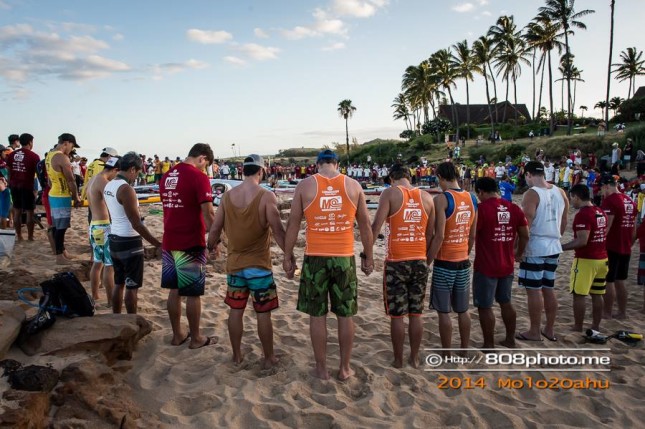
Molokai-2-Oahu (© 808photo.me)
Molokai is a unique race. Steeped in a proud history, the event garners a level of prestige not seen anywhere else outside of the BOP. However for all the tradition, honour and respect, Molokai isn’t really that competitive of a race. Sure, you could argue the top 5 finishers are usually five of the best ocean paddlers on the planet, which means it’s very hard to finish first, but once you get down below the top 10 you quickly see Molokai has a very shallow field.
Again, this elite level of competition that our Race Index measures isn’t the be all and end all. It doesn’t mean a race is good or bad or worthy or not. But it does show how many of the world’s best paddlers show up to compete, and right now Molokai has a pretty thin starting line.
On the men’s Race Index, Molokai just scraped into the Top 14 Most Competitive Races Of The Year, finishing 14th with a measly score of 28%. On the women’s side it went one spot better, 13th, but actually had a lower Race Index score of 20% – not far above the minimum threshold of 15%. In other words, if one or two of the top ladies didn’t compete this year, Molokai wouldn’t have counted towards the SUP RACER WORLD RANKINGS at all.
That’s a problem for a race with the words “World Championships” in the title and shows that once again there’s a disconnect between the myth and the reality. Obviously Molokai will never have a huge field – entries are strictly capped for safety reasons and the logistics/costs for most paddlers are staggering – but I feel it needs to do more to attract the world’s best.
Molokai will always be special, I just wish it was more competitive.
So there you go. Those were the Top 14 Most Competitive Races Of 2014.
But before we take a look at the men’s and women’s Top 14 lists, let’s look at the paddlers that performed well at the year’s most competitive events.
Winningest Athletes
In a sign of just how ridiculously good the world’s Top 3 ranked men (Connor Baxter, Kai Lenny and Danny Ching) really are, they shared wins in 13 of the Top 14 races this year.
The sole exception, Eric Terrien, got rather lucky in winning the 9th most competitive race of the year, the Lost Mills distance event, when the leading paddlers took a wrong turn that allowed the Frenchman to sneak through for an untouchable lead. Danny and Connor eventually recovered to finish 2nd/3rd in that race, so if it wasn’t for their mistake they probably would have battled for a win that would have sealed all 14 trophies for the world’s Top 3.
Connor Baxter: 7, Kai Lenny: 3, Danny Ching: 3, Eric Terrien: 1.
On the women’s side it was far more evenly spread, with seven paddlers sharing the spoils of the Top 14 races. Annabel Anderson, despite a limited race schedule this year, dominated just about every race she entered to claim 4 victories, while globetrotting Lina Augaitis matched her with 4 majors of her own. The BOP champ Candice Appleby picked up a pair while another five women each took home a single trophy.
Annabel Anderson: 4, Lina Augaitis: 4, Candice Appleby: 2, Shakira Westdorp: 1, Sönni Honscheid: 1, Devin Blish: 1, Halie Harrison: 1
Dominant Board Class
The board class debate is an endless and often very heated discussion. Nobody can agree on whether 12’6 or 14′ or unlimited or 4 metres or inflatables or whatever should be the de facto standard. Most paddlers agree that we have too many board classes, which is confusing and annoying, however try and agree on a solution and it’s like head-butting a bee-hive.
But what do the stats say? Stats don’t get emotional. Stats don’t get involved in heated debates. Stats are just stats. Cold, hard numbers that don’t lie.
So what did the stats have to say about the old board class debate?
Well if you look at the men’s list you’ll see that, unfortunately, the stats are actually just as divided as the rest of us:
6 of the Top 14 men’s races used 12’6 for the elite division
6 of the Top 14 races used 14′ for the elite division
2 of the Top 14 were unlimited races
So there you go. Even the stats are split on this issue. Though at least it’s a little clearer on the women’s, where the 12’6 is more dominant:
9 of the Top 14 women’s races used 12’6 for the elite division
3 of the Top 14 races used 14′ for the elite division
2 of the Top 14 were unlimited races
Ok so that’s the analysis done. Phew. I’m impressed if you actually read that whole thing. Anyway let’s get onto the lists already. Without further ado…
Top 14 Most Competitive Races Of 2014
- Race Index measures the “level of competition” or how “elite” a race is. The higher the % score, the more competitive the race is.
- The Race Index is calculated based on how many of the current Top 50 world ranked paddlers are competing. Maximum possible score is 100% (which would mean every single Top 50 paddler competed).
- The higher a paddler’s individual World Ranking is, the greater weighting they lend to an event’s overall Race Index score. See the SUP RACER WORLD RANKINGS for more info.
MEN’S TOP 14
[notdevice]
| # | Event | Race Index | Winner | Boards |
|---|---|---|---|---|
| 1 | Battle of the Paddle - Elite Race | 92.0% | Kai Lenny | 12'6 |
| 2 | Ultimate SUP Showdown | 53.5% | Connor Baxter | 12'6 |
| 3 | Naish Columbia Gorge Paddle Challenge - Course | 52.0% | Connor Baxter | 14' |
| 4 | Battle of the Paddle - Elite Distance Race | 48.0% | Danny Ching | 14' |
| 5 | Naish Columbia Gorge Paddle Challenge - Downwinder | 46.5% | Connor Baxter | 14' |
| 6 | Carolina Cup | 45.0% | Danny Ching | 14' |
| 7 | World Series Finals | 45.0% | Kai Lenny | 12'6 |
| 8 | Huntington Beach Pro (World Series) | 44.5% | Connor Baxter | 12'6 |
| 9 | The Lost Mills - Distance Race | 39.0% | Eric Terrien | 14' |
| 10 | Abu Dhabi All Stars (World Series) | 38.0% | Kai Lenny | 12'6 |
| 11 | The Lost Mills - "Fastest Paddler On Earth" Time Trial | 34.5% | Danny Ching | 14' |
| 12 | World Series Brazil | 34.5% | Connor Baxter | 12'6 |
| 13 | OluKai Ho'oluale'a | 31.0% | Connor Baxter | Unlimited |
| 14 | Molokai 2 Oahu | 28.0% | Connor Baxter | Unlimited |
| # | Event | Race Index | Winner |
|---|---|---|---|
| 1 | Battle of the Paddle - Elite Race | 92.0% | Kai Lenny |
| 2 | Ultimate SUP Showdown | 53.5% | Connor Baxter |
| 3 | Naish Columbia Gorge Paddle Challenge - Course | 52.0% | Connor Baxter |
| 4 | Battle of the Paddle - Elite Distance Race | 48.0% | Danny Ching |
| 5 | Naish Columbia Gorge Paddle Challenge - Downwinder | 46.5% | Connor Baxter |
| 6 | Carolina Cup | 45.0% | Danny Ching |
| 7 | World Series Finals | 45.0% | Kai Lenny |
| 8 | Huntington Beach Pro (World Series) | 44.5% | Connor Baxter |
| 9 | The Lost Mills - Distance Race | 39.0% | Eric Terrien |
| 10 | Abu Dhabi All Stars (World Series) | 38.0% | Kai Lenny |
| 11 | The Lost Mills - "Fastest Paddler On Earth" Time Trial | 34.5% | Danny Ching |
| 12 | World Series Brazil | 34.5% | Connor Baxter |
| 13 | OluKai Ho'oluale'a | 31.0% | Connor Baxter |
| 14 | Molokai 2 Oahu | 28.0% | Connor Baxter |
WOMEN’S TOP 14
[notdevice]
| # | Event | Race Index | Winner | Boards |
|---|---|---|---|---|
| 1 | Battle of the Paddle - Elite Race | 77.0% | Candice Appleby | 12'6 |
| 2 | Naish Columbia Gorge Paddle Challenge - Downwinder | 51.5% | Annabel Anderson | 12'6 |
| 3 | Ultimate SUP Showdown | 47.5% | Annabel Anderson | 12'6 |
| 4 | Naish Columbia Gorge Paddle Challenge - Course | 42.5% | Annabel Anderson | 12'6 |
| 5 | Carolina Cup | 39.0% | Annabel Anderson | 12'6 |
| 6 | Battle of the Paddle - Elite Distance Race | 38.5% | Lina Augaitis | 14' |
| 7 | World Series Finals | 32.5% | Halie Harrison | 12'6 |
| 8 | ISA Worlds - Course | 25.0% | Shakira Westdorp | 12'6 |
| 9 | Huntington Beach Pro (World Series) | 24.5% | Candice Appleby | 12'6 |
| 10 | The Lost Mills - Distance Race | 21.0% | Lina Augaitis | 14' |
| 11 | The Lost Mills - "Fastest Paddler On Earth" Time Trial | 21.0% | Lina Augaitis | 14' |
| 12 | Maui 2 Molokai | 21.0% | Devin Blish | Unlimited |
| 13 | Molokai 2 Oahu | 20.0% | Sonni Hönscheid | Unlimited |
| 14 | ISA Worlds - Distance | 16.5% | Lina Augaitis | 12'6 |
| # | Event | Race Index | Winner |
|---|---|---|---|
| 1 | Battle of the Paddle - Elite Race | 77.0% | Candice Appleby |
| 2 | Naish Columbia Gorge Paddle Challenge - Downwinder | 51.5% | Annabel Anderson |
| 3 | Ultimate SUP Showdown | 47.5% | Annabel Anderson |
| 4 | Naish Columbia Gorge Paddle Challenge - Course | 42.5% | Annabel Anderson |
| 5 | Carolina Cup | 39.0% | Annabel Anderson |
| 6 | Battle of the Paddle - Elite Distance Race | 38.5% | Lina Augaitis |
| 7 | World Series Finals | 32.5% | Halie Harrison |
| 8 | ISA Worlds - Course | 25.0% | Shakira Westdorp |
| 9 | Huntington Beach Pro (World Series) | 24.5% | Candice Appleby |
| 10 | The Lost Mills - Distance Race | 21.0% | Lina Augaitis |
| 11 | The Lost Mills - "Fastest Paddler On Earth" Time Trial | 21.0% | Lina Augaitis |
| 12 | Maui 2 Molokai | 21.0% | Devin Blish |
| 13 | Molokai 2 Oahu | 20.0% | Sonni Hönscheid |
| 14 | ISA Worlds - Distance | 16.5% | Lina Augaitis |
NEXT READ THIS:
– Top 14 Stories Of 2014
– Top 14 Videos Of 2014
– Top 14 Most Popular Races Of 2014



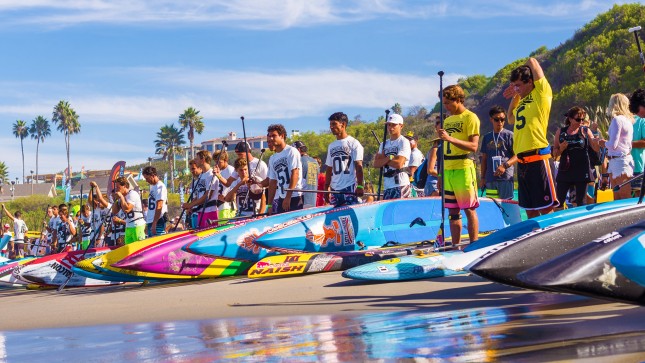
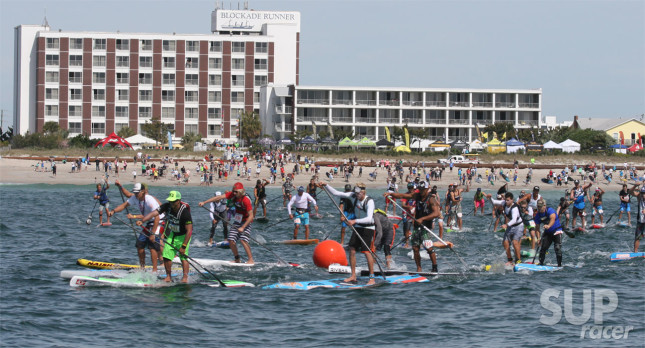
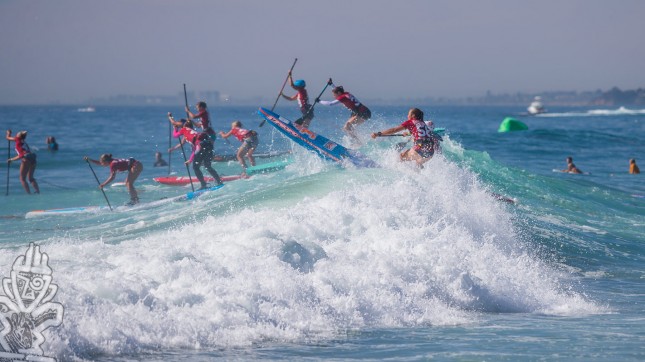
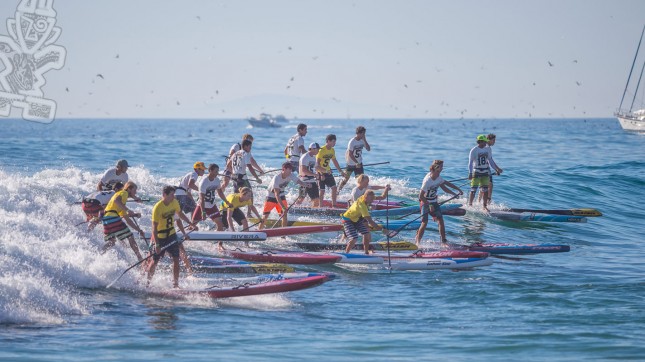
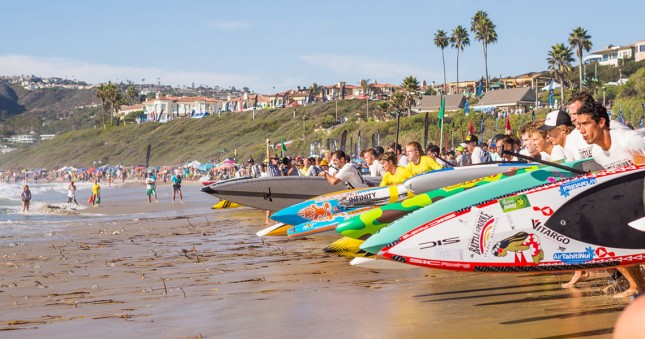
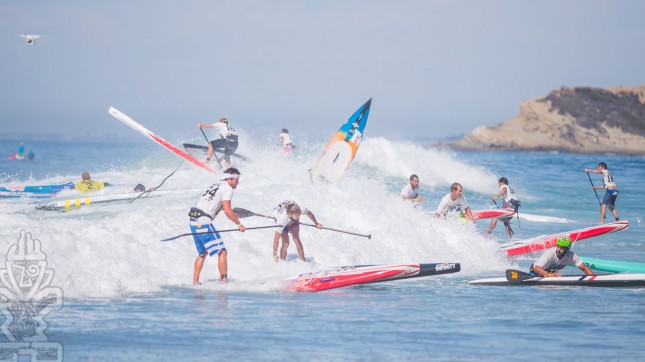
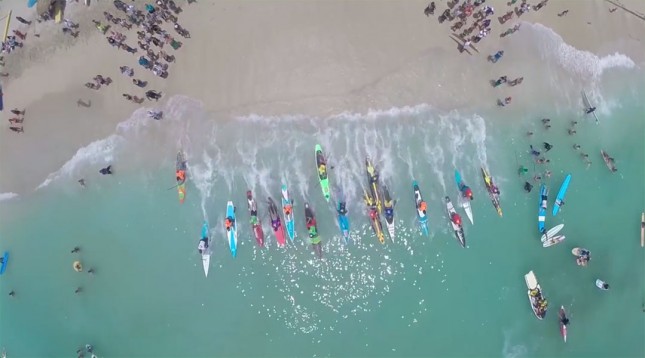
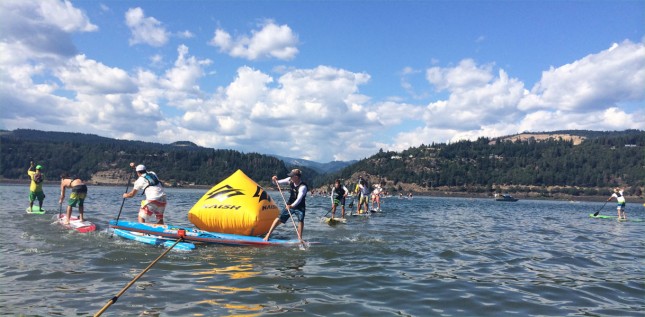
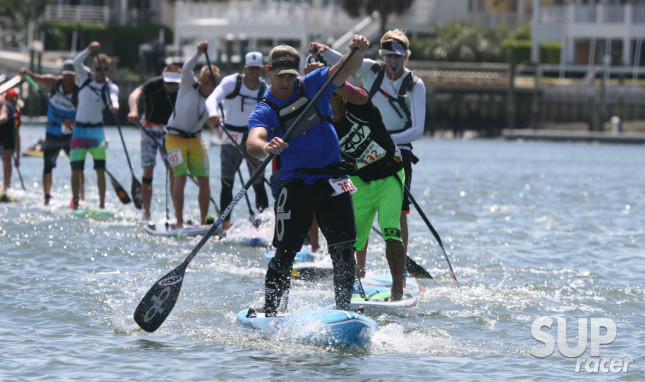
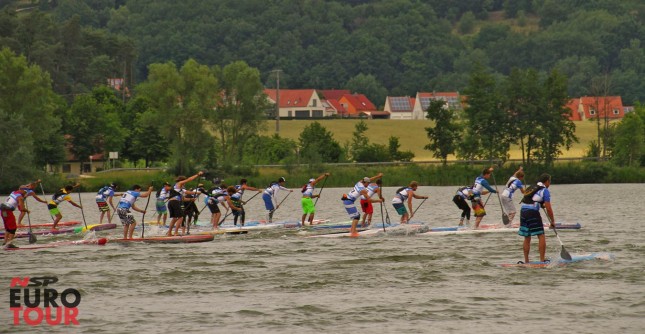
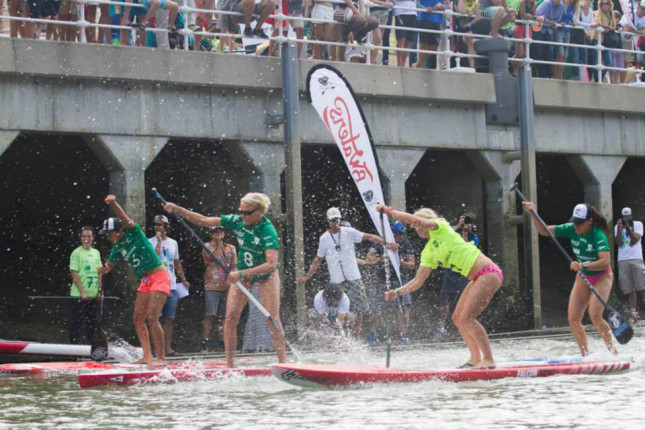
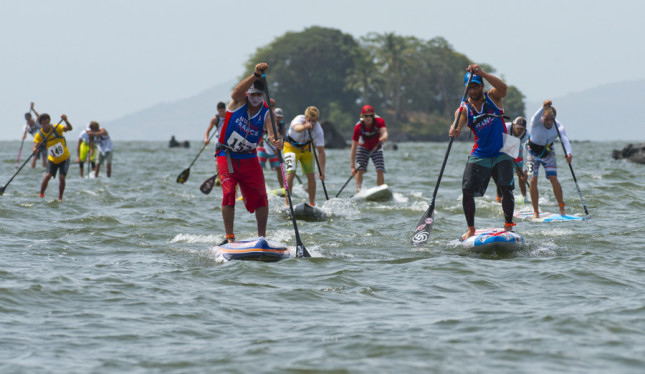
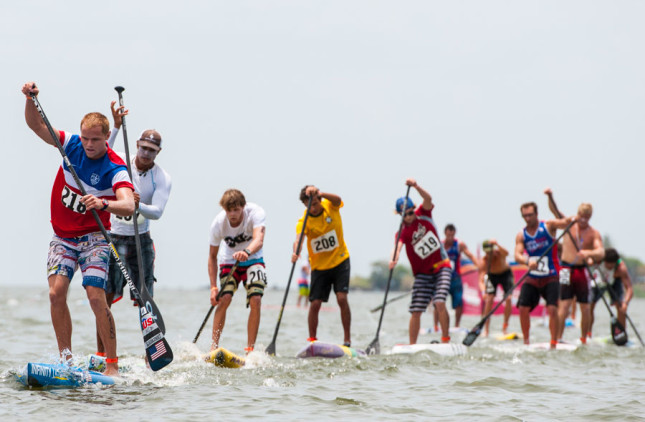
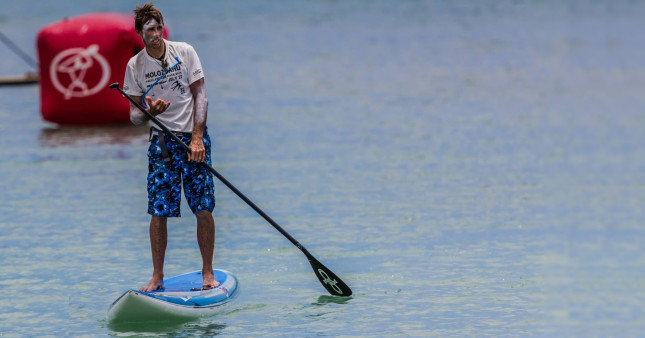
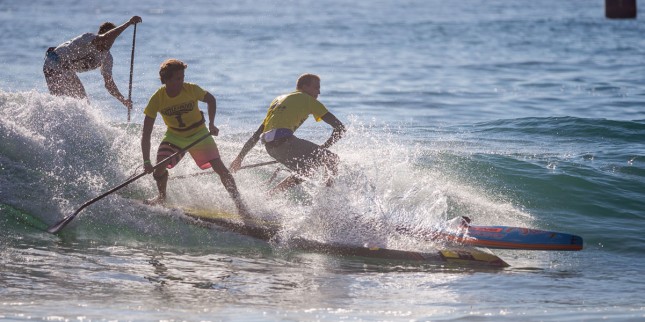
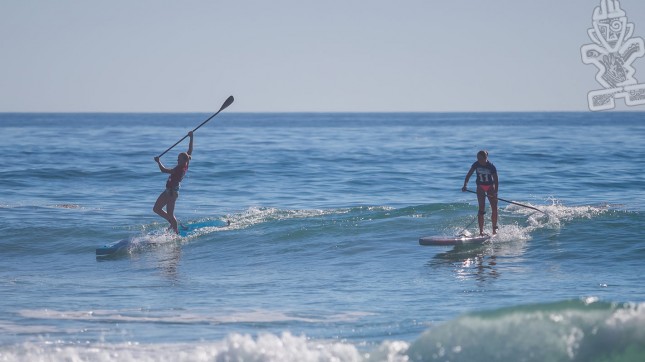
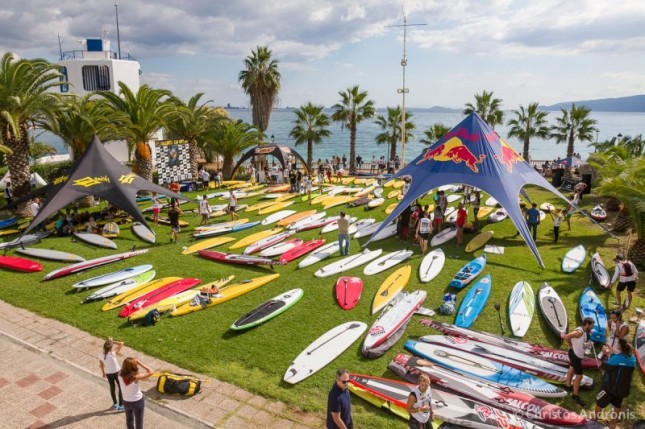
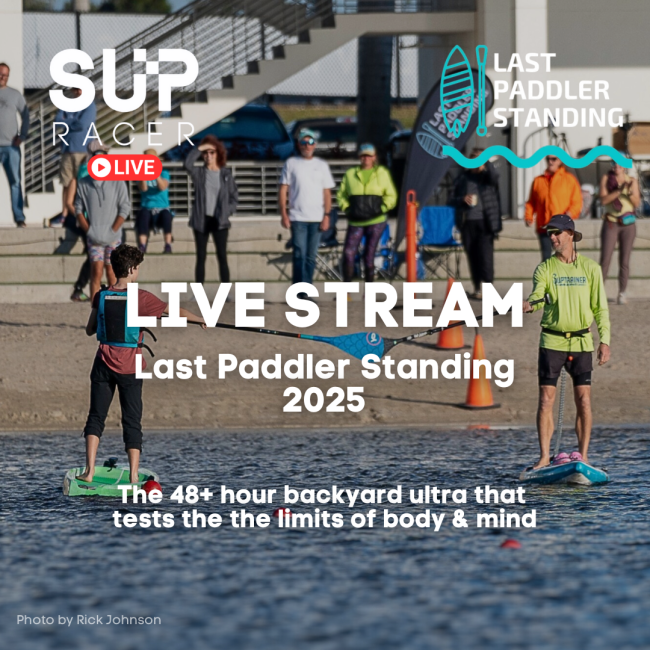
You must be logged in to post a comment.